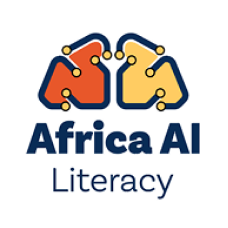Lesson 1: What is AI?
0/5
Lesson 2: How computers learn from data
Learn about the role of data-driven models in AI systems and machine learning.
Learning objectives:
- Define machine learning’s relationship to artificial intelligence
- Name the three common approaches to machine learning
- Describe how classification can be solved using supervised learning
Key vocabulary:
Machine learning, training data, supervised learning, unsupervised learning, reinforcement learning, classification, class, label
Lesson structure:
- Is a ‘smart’ speaker an AI application?
- Breaking down a smart speaker
- How to models learn?
- The types of machine learning
- Classification
- Classifying animals in the Serengeti
0/8
Lesson 3: Bias in, bias out
Create a machine learning model to classify images and explore how a limited data set can lead to bias.
Learning objectives:
- Describe the impact of data on the accuracy of a machine learning (ML) model
- Explain the need for both training and test data
- Explain how bias can influence the predictions generated by an ML model
Key vocabulary:
Artificial intelligence (AI), machine learning (ML), supervised learning, classification, training data, test data, accuracy, bias, data bias, societal bias
Lesson structure:
- The three different types of machine learning
- Supermarket AI application
- Training a model
- Bias
- Student timetable model
- Reducing bias
0/5
Lesson 4: Decision trees
Discover how and why decision trees are used in machine learning.
Learning objectives:
- Describe how decision trees are used to build a classification ML model
- Describe how training data changes an ML model
- Explain why ML is used to create decision trees
Key vocabulary:
Decision tree, feature, node, root node, decision node, leaf node, classification, explainability
Lesson structure:
- Classification recap
- What does a model look like?
- Using a decision tree
- Creating a decision tree
- Using ML to create a decision tree
- Decision trees in medicine
0/6
Lesson 5: How to solve problems with machine learning models
Train and test a machine learning model to solve a real-world problem.
Learning objectives:
- Describe the stages of the AI project lifecycle
- Use a machine learning tool to import data and train a model
- Test and examine the accuracy of an ML model
Key vocabulary:
AI project lifecycle, data cleaning, machine learning model, class, label, training, testing, accuracy, confidence score, confidence threshold
Lesson structure:
- Order the stages of the AI project lifecycle
- User-focused approach
- Stage 1: Defining the problem
- Stage 2: Preparing the data
- Stage 3: Training the model
- Stage 4: Testing the model
- Reporting on the accuracy of a model
0/12
Lesson 6: Model cards and careers
Evaluate a project by creating a model card and learn about AI-related careers.
Learning objectives:
- Evaluate an ML model
- Produce a model card to explain an ML model
- Recognise the range of opportunities that exist in AI-related careers
Key vocabulary:
AI project lifecycle, machine learning model, model cards, class, label, training, testing, accuracy, confidence score, confidence threshold
Lesson structure:
- Predicting future crime
- Evaluation and explainability
- Using a model card
- Create your own model card
- Careers in AI and machine learning
- The use of AI applications in other fields
0/7
